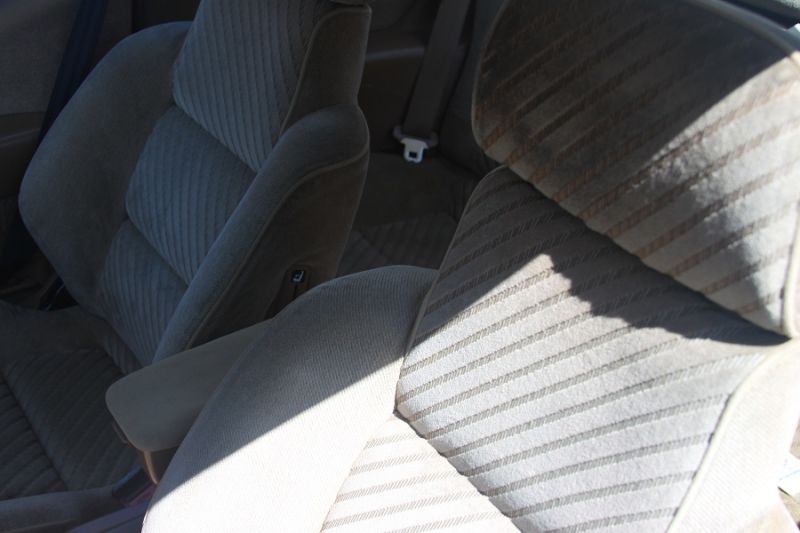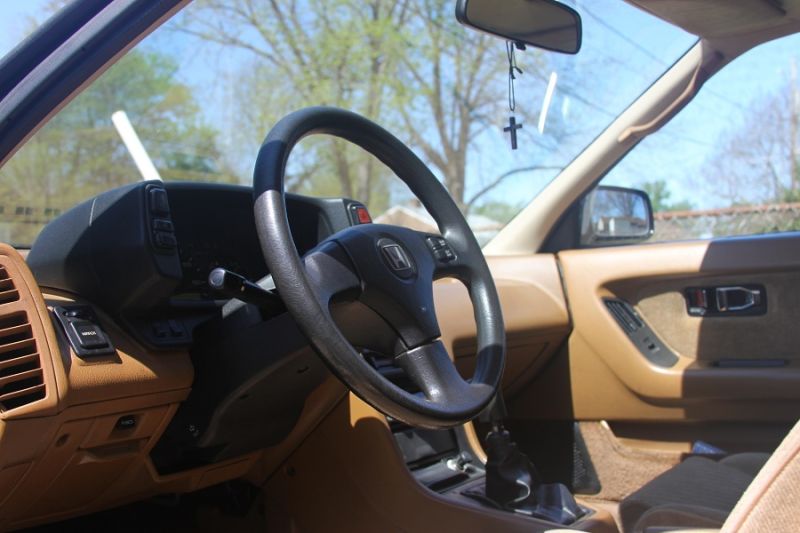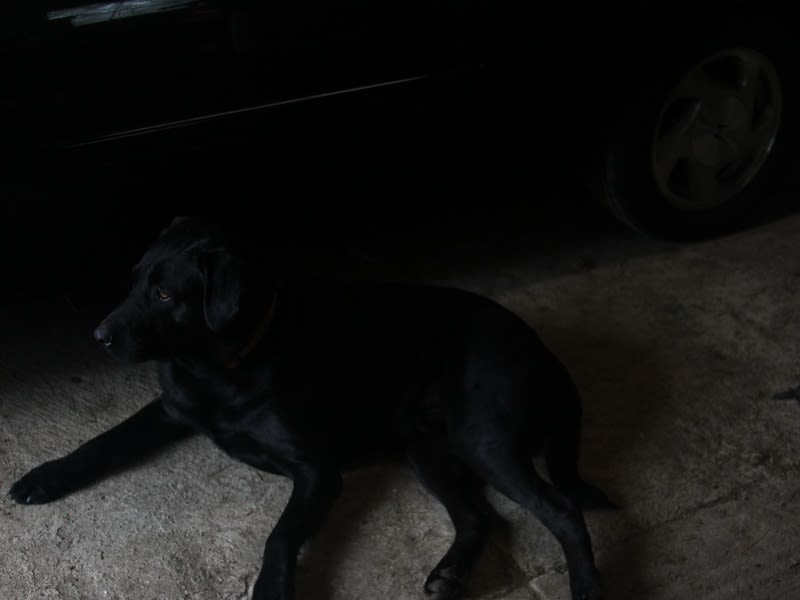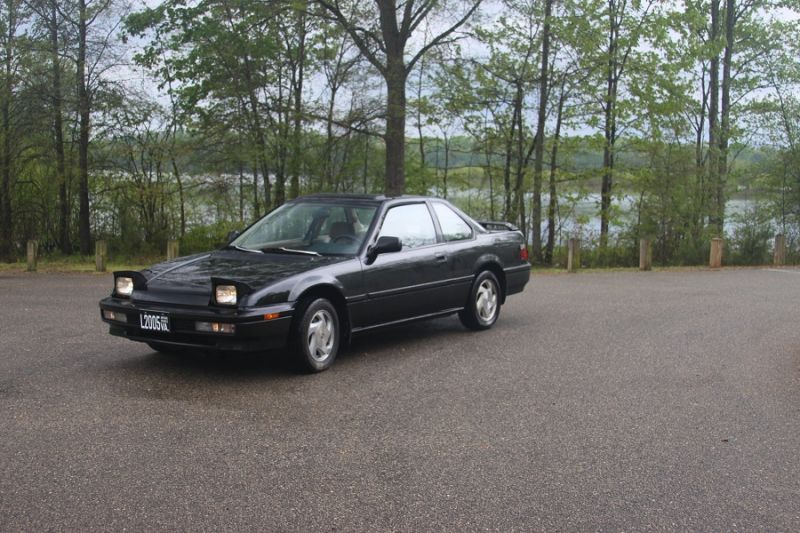No, it doesn’t have 4-wheel steering.
The 3rd generation Honda Prelude was built between late 1987 and 1991, just after the company’s CVCC era and right when the VTEC era started to kick in (yo). For 1990, the car underwent its mid-model refresh. Originally available with either a SOHC carbureted or DOHC fuel-injected version of a 2.0L engine (denoted as 2.0S or 2.0Si, respectively), the refresh brought a new top trim level, just called the Si, with a new 2.05L fuel-injected B21A1 engine. The Si was available with one of two optional packages: 4WS, adding the famous mechanical 4-wheel steering system that had been available on the 2.0Si in 1988 and 1989; or ALB, Honda’s abbreviation for anti-lock brakes at the time. The 2.0Si became the middle trim level at this point, and for 1991 the carbureted S model was dropped, leaving just the 2.0Si and the Si. While the 4WS model is the most popular with pretty much everyone who’s ever heard of the Prelude, the ALB was the slightly more expensive option. (In the United States, you couldn’t get both ALB and 4WS on the same car, but the JDM limited edition Si States, which, as its name suggests, was based on the USDM Si, had both, as well as leather, and there was a limited edition Canadian model called the SE that was more or less the same thing as the Si States.) My 1991 Si, given the nickname Lucky since it was saved from the junkyard, is an ALB model with a 5-speed.

(Full disclosure: I couldn’t decide whether or not I wanted to do a real “full disclosure” blurb, so I made this satirical one. Oops.)
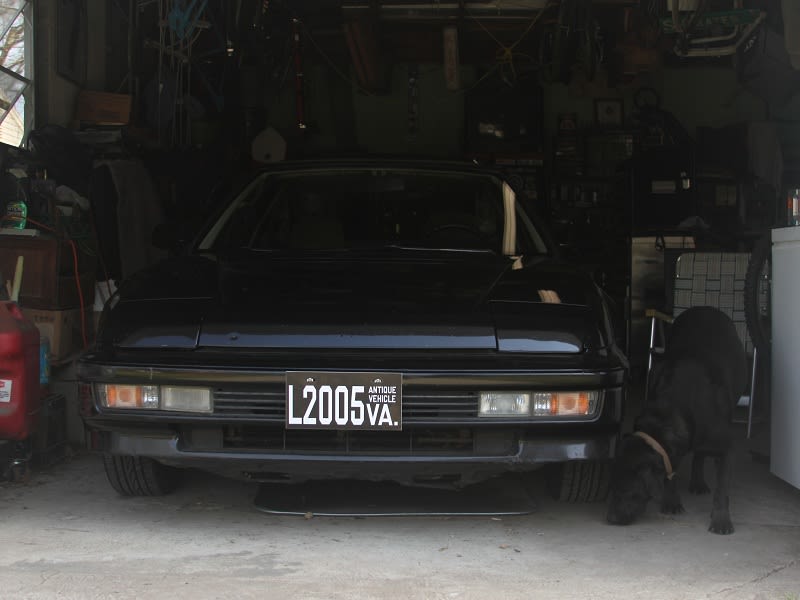
Exterior - 7/10
Along with its contemporary corporate siblings, the 3rd gen Prelude was made when Honda was at the top of its game. The iconic shape of the 3rd gen was refined from its predecessor, and in the 1990 refresh was given a cleaner-looking rear end to make it one of the most attractive Hondas ever made. 90-91 Si’s had five-spoke blade wheels either in silver or painted white, the latter an option on white cars. Lucky’s Granada Black Pearl paint is in great shape for the most part, and I chose the black Virginia antique plates to match it. Still, there are two areas of Honda Rust on the passenger’s side, although the driver’s side is clean and I have a pair of rust-free quarter panels either to put onto the car or to go with it should I decide to do the unthinkable and sell it. Aside from that, the missing front H badge, and a few scuffs here and there, particularly on the front bumper, the car is clean for being 25 years old, getting compliments from people wherever I take it.
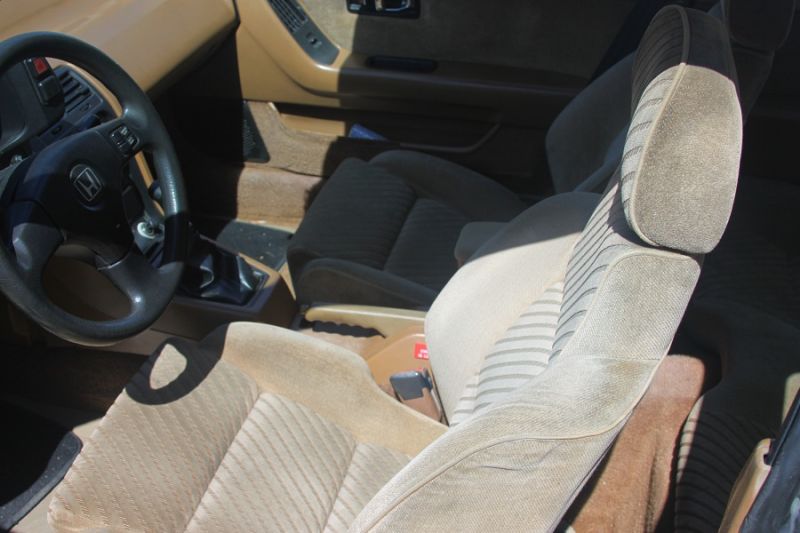
Interior – 8/10
Being Honda’s baby GT car, the Prelude was designed with a balance of performance, comfort, and innovation in mind. The interior is mostly straightforward, with all the needed buttons close to the driver. Outward visibility is fantastic at all angles thanks to extremely thin pillars. Although advertised as a 2+2, room in the back seat is, to put it mildly, cramped, especially if the front seat occupants are tall. (I’m 5’7”, so any potential back seat occupants have at least a little room.) Air bags weren’t available, with the car instead getting those strange door-mounted seatbelts that are supposed to always be buckled in, but inevitably get unbuckled like regular seatbelts because that’s a nuisance. While Lucky’s tan (designated Type G, or Camel, by Honda) cloth is mostly in good shape, there is some typical fading towards the back, and there are a few bent and broken plastic pieces, but most of these aren’t noticeable when the doors are closed. The front seats are comfortable, with such things as a memory button, extra angle adjustment, headrest adjustment, and a knob-and-lever setup that controls lumbar and side supports. Lucky has an arm rest, an extremely rare piece that was an aftermarket purchase at the time the car was new. It’s a great conversation piece, but can get in the way of shifting into 2nd and 4th gear if you’re not careful. There’s a tilt wheel, and a coin pocket next to it. The clock’s cover and the rearview mirror screw cover, both pieces that are prone to breaking, are both present. The odometer’s 150,000 miles are backed up by a Carfax, and the speedometer optimistically shows a 140 MPH maximum with a 6500 RPM redline. With the transmission’s short gearing, that’s a pipe dream, but we’ll talk about that when the time comes.
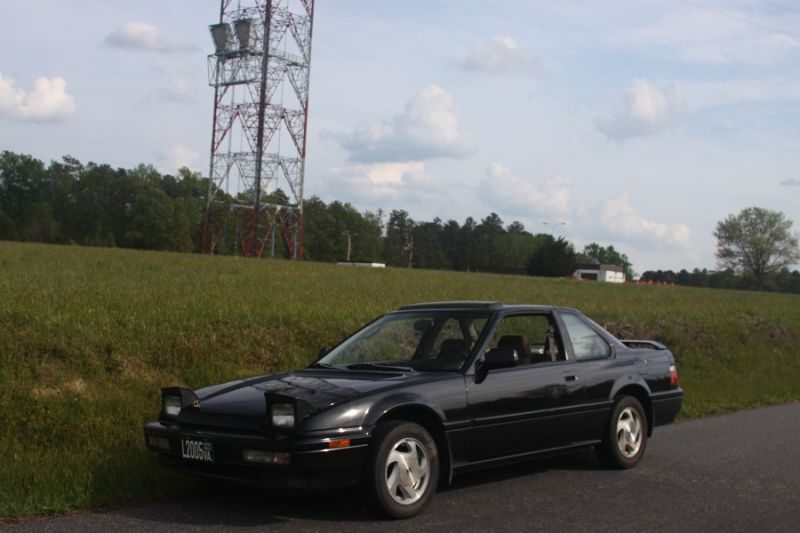
Toys – 7/10
Headlights go up, headlights go down. Need I say more? Yes? All right then. The Si came standard with fog lights (the last time an American-market Prelude had fog lights standard) and power mirrors, with the 4WS and ALB packages getting power locks. I also mentioned the interior goodies in that section of the review. A sliding moonroof was standard on all USDM Preludes, and Lucky has the optional visor for it. Cruise control is standard and works fine.
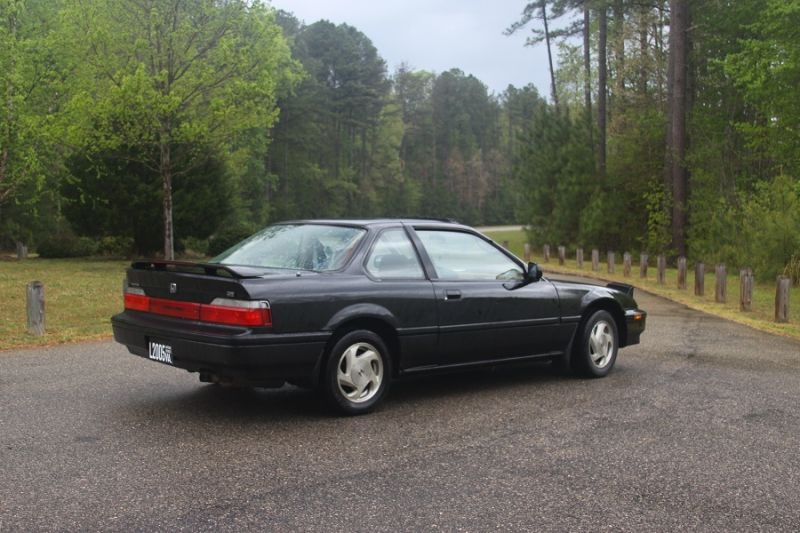
“But what about 4-wheel steering?” I don’t know. You’ll have to ask someone who has it.
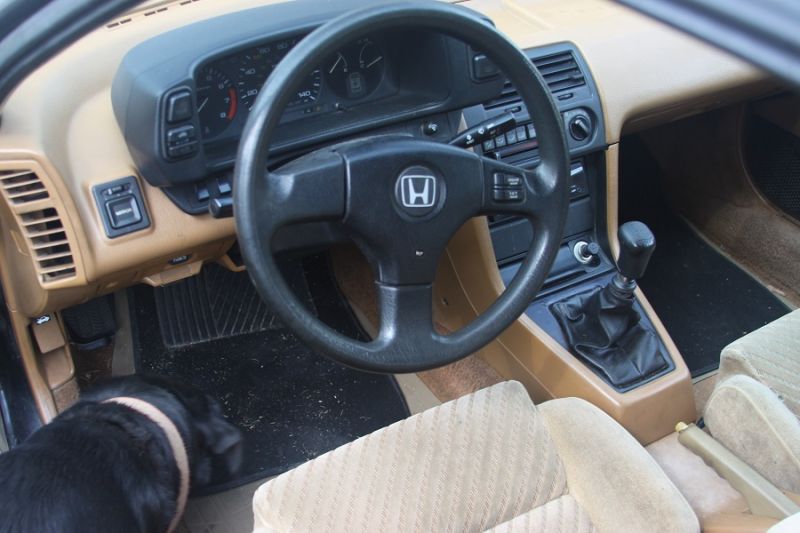
Audio – 6/10
An AM/FM/cassette unit was standard, with a CD player optional. Like most, Lucky has had its factory unit replaced with an aftermarket CD player, in this case your typical Pioneer. I’ve picked up both the factory radio and the CD player in junkyard scores, but haven’t gotten around to installing them. Knowing Honda, there’s some missing wiring I need to get the CD player working. 6.5” speakers by either Jensen or Matsushita are standard, but are starting to sound a bit tired. The stock engine and exhaust setup sounds smooth, albeit a bit raspy, with the car happily climbing its rev range.
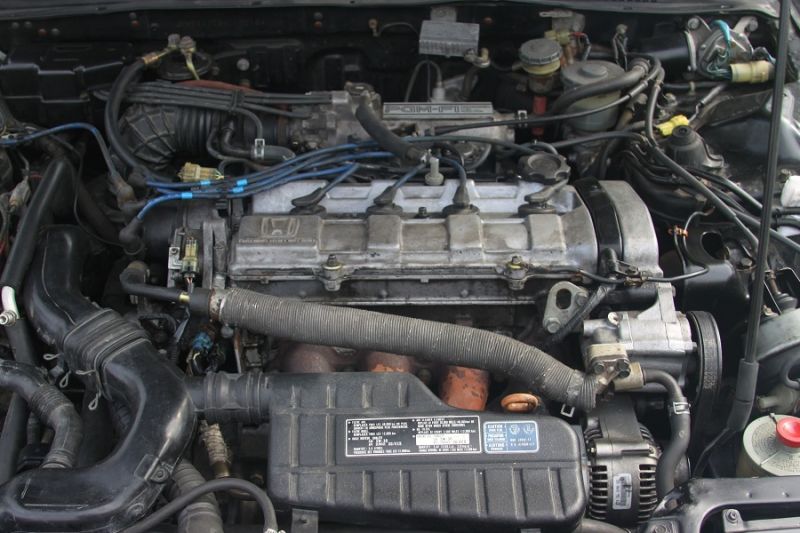
Acceleration – 5/10
The 1990-91 Si is the fastest-accelerating of the 3rd gen Preludes, with a shorter gearset and slightly larger displacement than its lower-trimed siblings. Still, that just meant it had a 0-60 time a little under than 9 seconds instead of a little over 9 seconds. It’s not going to win many drag races with 140 bhp and 135 lbft of torque, which, while unimpressive today, was respectable for its time. I’ve been in situations in this car where I’ve wished for a bit more power at a usable level, unlike my 5th gen with its H23 VTEC’s more balanced powerband.
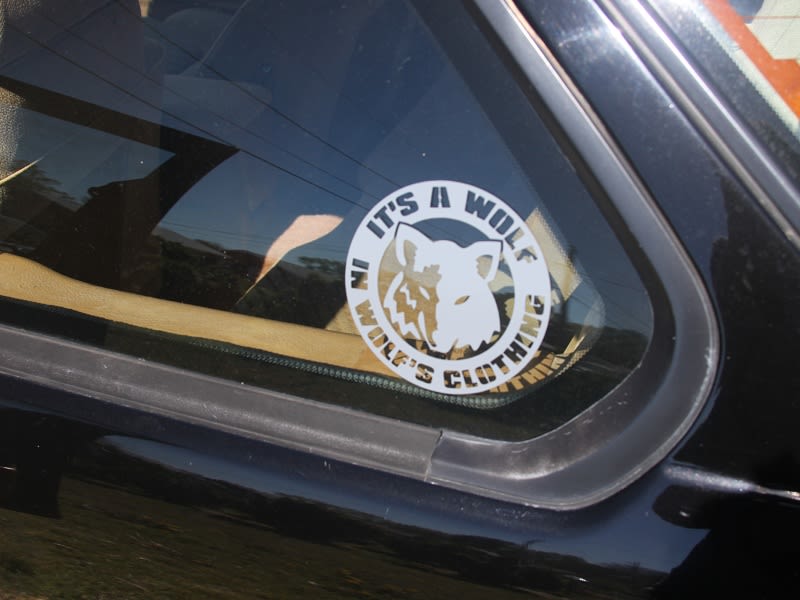
Braking – 6/10
Four-wheel disc brakes were standard. ABS was optional, but not really all that necessary, and somewhat separate from the regular braking system, having its own fluid reservoir. From what I can tell, this wasn’t uncommon for 90s Hondas, but the setup was eventually changed to having a common reservoir. (My 5th gen Prelude has only one brake fluid reservoir, but my 4th gen doesn’t have ABS at all, so I don’t remember whether the ABS on 4th gens that have it has a separate reservoir.) Lucky’s ABS doesn’t seem to work, but I’m not too worried about it because the brakes as they are do their job adequately and repeatedly, with no discernable difference between dry and wet conditions.
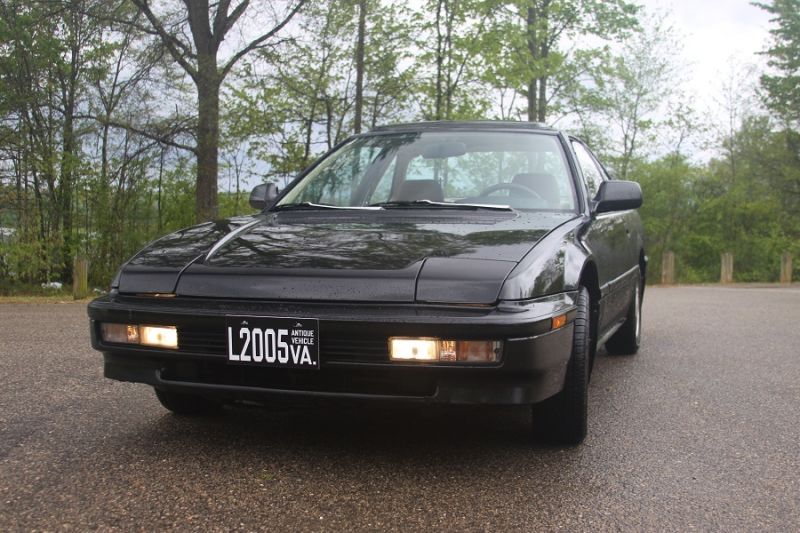
Ride – 7/10
Not quite a go-kart-level experience, but not far from it. Ride height is low to the ground from stock, so much so that a stancebro friend of mine once said that, while he didn’t like the wheel gap, he’d be hesitant about lowering it. The stock suspension is nicely balanced between comfort and performance, and the outside wind noise is kept to acceptable levels in the cabin, but still present. There are rattles and squeaks, but that’s to be expected from a 25-year-old car. My first drive was on the white wheels I used to keep the car in storage, which are on harder tires, but even they were decent. The softer Falkens on the silver wheels improve both ride quality and performance. Honda really knew what it was doing with this car.
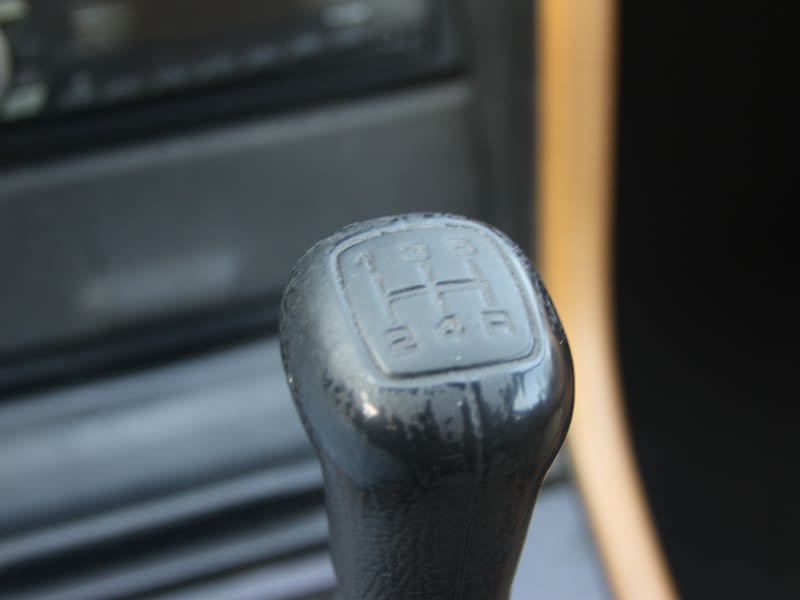
Gearbox – 8/10
A 5-speed manual was standard, with a 4-speed automatic available. The shifter in the manual is silky smooth, albeit tall (I mean physically, not the throw length), and the clutch is light. With its short ratios, a 6th gear would be nice, but it’s a product of its era, when the National Maximum Speed Law was still around. At 55 MPH, you’re just below 3000 RPMs in 5th gear, similar to the transmissions given to the H22 models of the 4th and 5th gen but with less room to play with on the tach. If you want to keep up with modern freeway traffic, you’re going onto the high end of the powerband. 5th gear grinds a bit if you shift too quickly, a common thing with Hondas with over 100,000 miles on them.
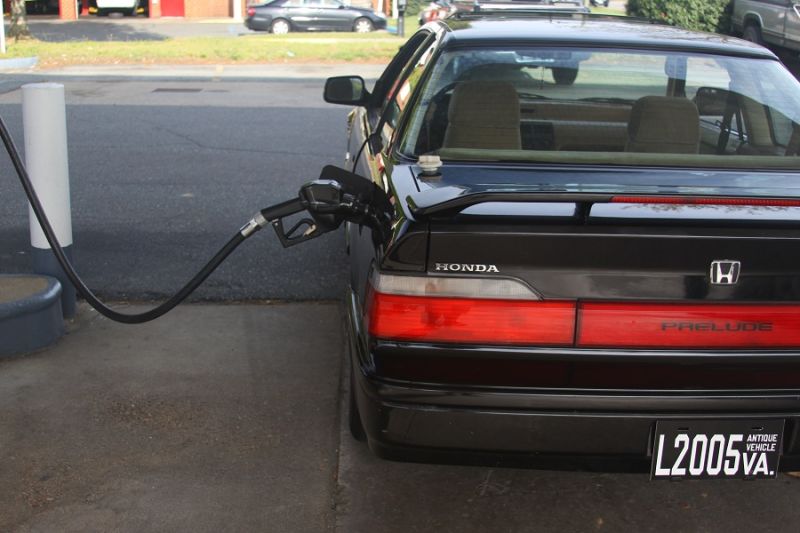
Handling – 9/10
Across all its generations, but especially the 3rd and 4th, the Prelude was well known for its competent handling, with its low center of gravity and double-wishbone suspension. The handling of the 3rd gen 4WS is legendary, among the best of its time when it was new. I often get asked if Lucky has it (in case you can’t tell), but even without it it’s still a very nimble car. The 3rd gen’s engine was mounted with a slight tilt toward the driver, improving center of gravity and perhaps helping a little bit with weight distribution. The car shines on twisty roads; on some of the greater Richmond area’s best driving roads I’ve caught up to cars that would dust Lucky in any other situation. Like all FWD cars, it does understeer a bit, but less than its younger siblings. It’s quite fun.
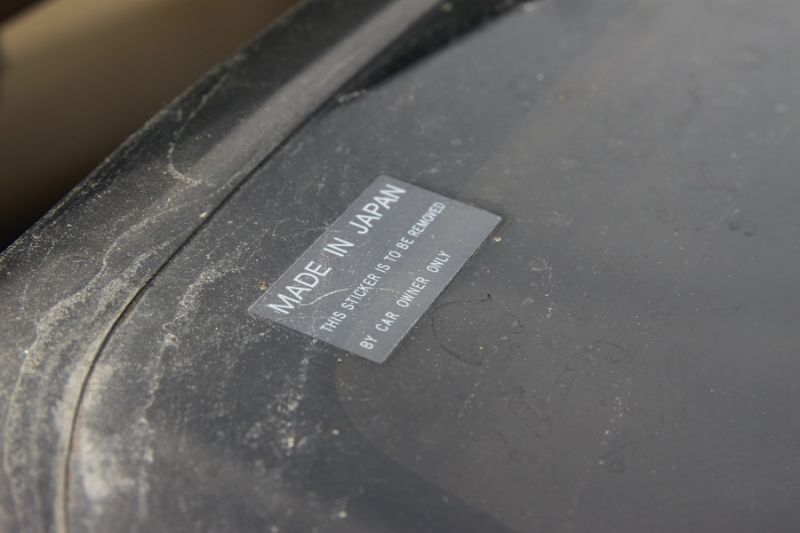
Value – 7/10
The MSRP for a 1991 ALB 5-speed was $19,000, or just over $30,000 in today’s money. Today, most 3rd gen Preludes have disappeared from the roads and the majority of the ones left are in beater condition. You can find “ran when parked” examples for LeMons money, automatics for about $1000, and running 5-speed models for a little more. As overall condition improves, prices go up, and rust-free and/or 4WS models are of course the most desirable. I acquired mine in a trade, with my dad, who didn’t want it anymore, for a car I didn’t want anymore, so it was a good deal for both of us. Still, if you want one, you should do your homework. Parts are getting scarce quickly, the aftermarket is thin, the engine bay is cramped, and the B21A1 tends to have oil consumption issues as it ages, especially in manual cars. Many 90-91 Si owners have installed B20A5s from the 2.0Si, JDM B20A’s, and even H-series engines in their cars. On the plus side, if you own one you tend to get a lot of nostalgic compliments from people of all ages about how much they wanted one or how they used to have one and enjoyed it. Many, many people out there have 3rd gen Prelude stories. The car still turns heads and gets attention from all around.
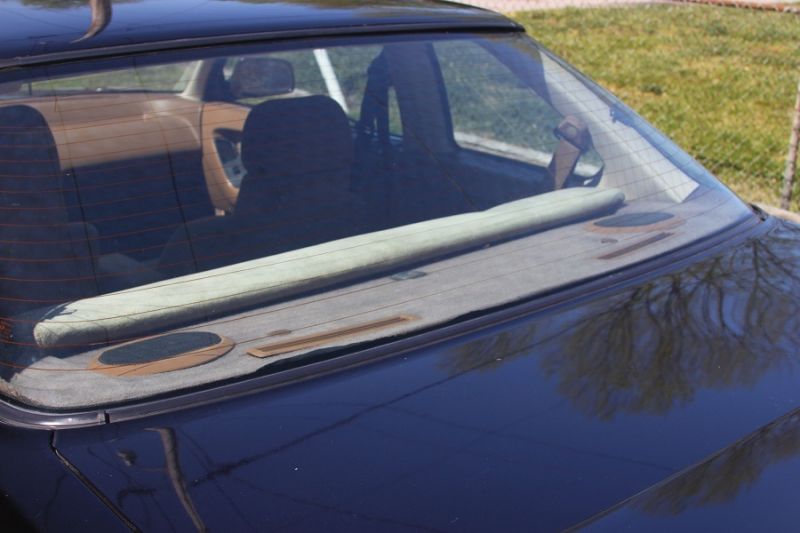
Total – 70/100
By modern standards, the 3rd gen Prelude Si is outdated and impractical, and not for everyone. If you’re looking for an inexpensive, comfortable, reliable, and fun second or third car to cruise around back roads on a nice weekend, then check one out. Of course, if you buy one, prepare for people asking if it has 4-wheel steering.
Engine: B21A1 2.05 liter DOHC PGM-FI 16-valve 4-cylinder
Transmission: D2A4 close-ratio 5-speed manual
Power/torque: 140 bhp/135 lbft
Curb weight: 2690 pounds
0-60: 8.7 seconds
Top speed: approximately 120 MPH
Seating: 2+2
MSRP in 1991: $19,000.00
